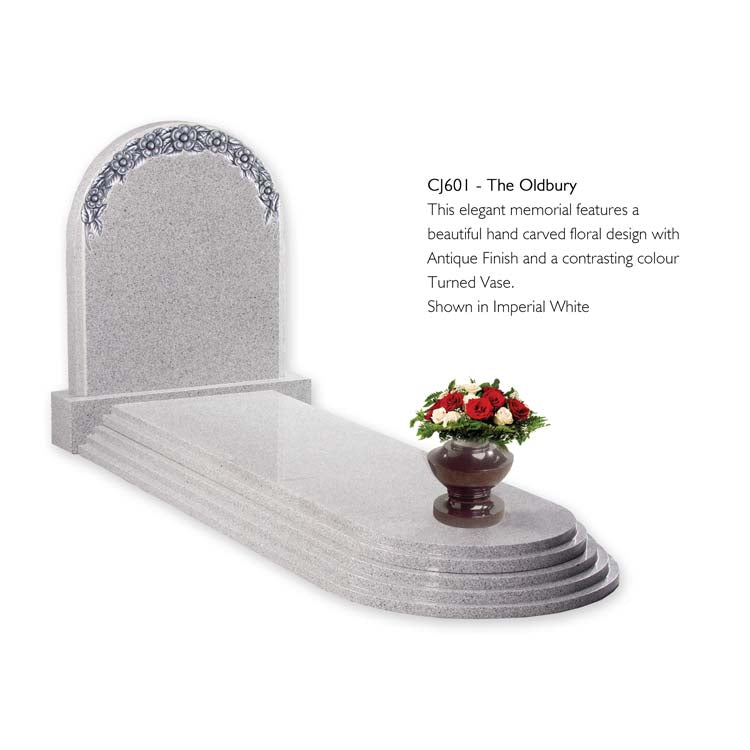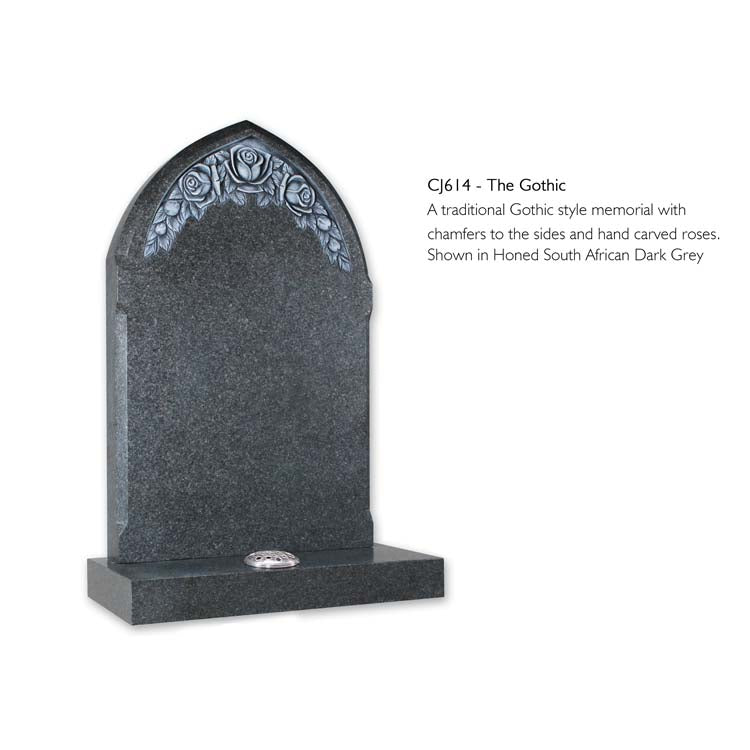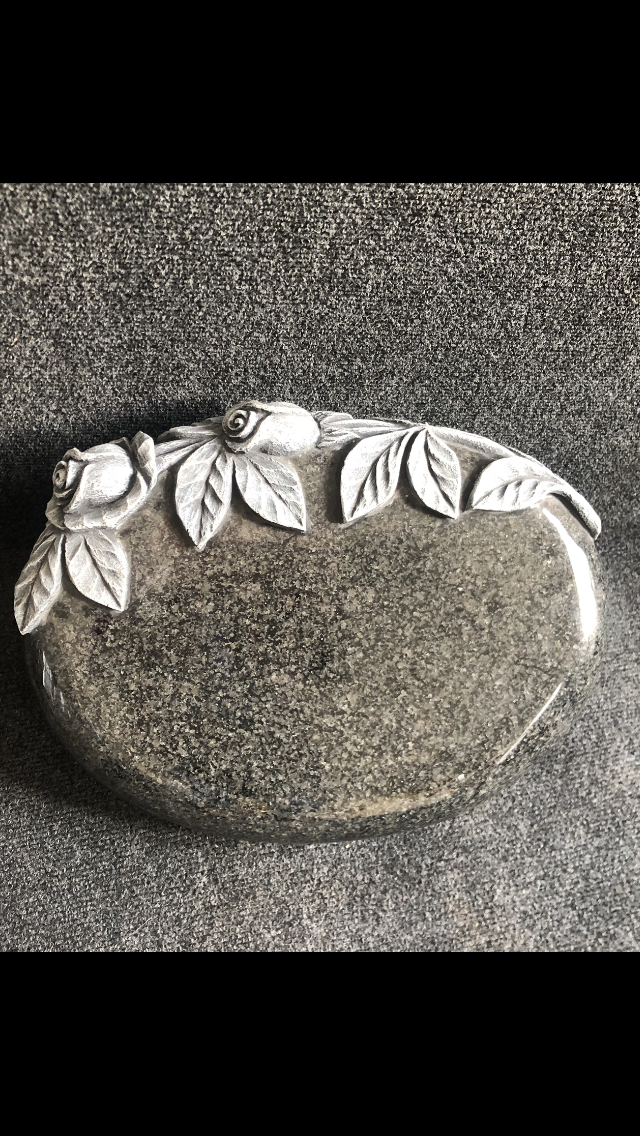Guide to church yard regulations
When commemorating the life of a cherished loved one, it's important to navigate the regulations and guidelines set forth by the cemetery or churchyard. Failure to adhere to these requirements could lead to the rejection of the memorial or headstone.
At James Beresford & Sons, we understand the significance of this process, which is why we take care of the application process on your behalf. Securing approval before proceeding with any memorial work is essential, as cemeteries or churchyards have the authority to decline any memorial that doesn't meet their specific criteria.
General Regulations for the Erection of Memorials and Gravestones in Churchyards
Preface
1. Any memorial needs permission before it can be placed in a churchyard. These
Regulations are made by the Chancellor of the diocese of Derby to explain how to
get permission, and what is likely to be permitted. If a memorial or other item is
placed in a churchyard without permission, then the Chancellor can order its
removal immediately.
2. This preface does not form part of the Regulations, but is provided to assist with
better public understanding of the background to the Regulations.
3. Churchyards differ from local authority cemeteries in that they are attached to a
church building which is often listed, or otherwise of historic or architectural
interest, and used by a worshipping community. For this reason, there needs to be
more careful control over what memorials can be placed there.
4. The control is provided by the requirement for a faculty (permission) from the
Chancellor before any memorial can be placed in a churchyard. It would be both
expensive for those looking to install memorials (there is a fee payable on the
application for a faculty) and onerous for the Chancellor if every memorial had to
be individually approved, so, for that reason, these Regulations set out certain
classes of memorial which are considered generally acceptable. In these cases, the
decision to permit a memorial can be made by the Vicar1
.
5. If the proposed memorial is within these Regulations, permission can be granted
by the Vicar. The Vicar is not obliged to grant permission for a memorial within
the terms of these Regulations, however, if he or she considers it unsuitable. If the
Vicar is in any doubt, after consultation with the Archdeacon in accordance with
these Regulations2
, she or he is encouraged to refuse permission, so that the
request can be more fully considered. If the Vicar refuses permission, then an
1 Vicar includes Rector, Priest-in-Charge or, during a vacancy, Area Dean.
2 The Archdeacon has authority to permit memorials that are not strictly within the Regulations in
appropriate circumstances.
application can be made to the Chancellor for permission. If a memorial does not
comply with these regulations, the Vicar has no authority to grant permission.
6. If a proposed memorial is not of a type permitted by these Regulations, this means
that it is not considered generally acceptable and so will need detailed
consideration before it can be permitted. Certain types of memorial are out of
keeping with the churchyards of the diocese and are considered generally to be
unsuitable and, as such, would only be permitted in exceptional circumstances.
7. The judgment as to what is generally acceptable or generally unacceptable is based
on many years’ practical experience. It is informed by wide consultation and takes
account of a variety of factors. In particular, memorials in a consecrated
churchyard must not be contrary to, or indicative of any departure from, the
doctrine of the Church of England in any essential matter, although in a secular
and multicultural age they do not have to be positively Christian in character. The
appearance of a memorial is also important. It should be of a modest and sober
appearance, which will not cause it either to stand out or to detract or distract from
the atmosphere of the churchyard as a place of quiet prayer, reflection and
commemoration. Since a churchyard frequently forms the immediate
surroundings to a church, it is necessary to consider whether the proposed
memorial will add to or detract from those surroundings. This is particularly
important where the church is listed, as a listed building is given a special status
by the secular law. Finally, it is important to consider the impact of a proposed
memorial on practical aspects of the life of a church, such as churchyard
maintenance and health and safety.
8. It must be stressed that these Regulations do not place limits on what may be
permissible. They mark the limits of the Vicar’s authority to grant permission. If a
design which does not fall within these Regulations can be justified, it may be
permitted by the Chancellor. The presence of existing memorials which do not
conform to these Regulations does not, however, necessarily set a precedent for
further such memorials.
Introduction
9. These Regulations describe memorials which will generally be acceptable in the
churchyards of the diocese. A memorial which is within the terms of these
Regulations is likely to be permitted. A memorial which is outside the terms of the
Regulations is less likely to be permitted. Some types of memorials will only be
permitted in exceptional circumstances. These Regulations only apply to
memorials and gravestones. Anyone wishing to introduce any other item into a
churchyard should discuss this with the Vicar.
10. Some churchyards have their own regulations which have been approved by the
Chancellor to accommodate particular local conditions. If so, those local
regulations will apply in place of these ones. Parishes may seek approval of local
variations to these Regulations from the Chancellor. Anyone with questions as to
the applicability or operation of these Regulations should check with the Vicar or
Registry Office (details below).
11. Records of burials, interred ashes and reserved grave spaces are kept by the
church. These should be accurate and kept up-to-date. Questions as to the
locations of burials and the availability of grave spaces should be addressed to the
Vicar, in the first instance.
12. The Vicar may permit either an upright headstone or a horizontal slab on each
grave, provided that it falls within the standard specifications set out in the
following sections, and the sections on materials and inscriptions below.
13. Any memorial permitted under these Regulations must be fixed securely and in
accordance with BS8415 and the construction dowels and fixings should be in
accordance with the National Association of Memorial Masons’ code of working
practice.
14. These Regulations also contain provisions on commemoration after cremation,
flowers and churchyard maintenance.
Standard Specifications
Upright headstones
15. In order to fall within the standard specifications, an upright headstone must be
of the following dimensions:
a. Adult headstones between 75cm (30”) and 120cm (48”) in height; 50cm (20”)
and 90cm (36”) in width; and 7.5cm (3”) and 15cm (6”) thick, but in the case
of slate 2.5cm (1”) thick;
b. Headstones for children may be smaller but no less than 60cm (24”) in
height, 37.5cm (15”) in width and 5cm (2”) thick.
16. In order to fall within the standard specifications, an upright headstone must be
of one of the following three designs:
a. Inserted directly into the ground to sufficient depth to ensure stability; or
b. On an integral base which does not project above the ground by more than
the thickness of the gravestone and does not project beyond the gravestone
by more than 10cm (4”) in any direction;
c. On a vase base, where the receptacle for flowers shall be flush with the top
of the base and may extend up to 20cm (8”) in front of the headstone.
The Vicar may permit headstones, the top of which is not horizontal, provided that
the Vicar is satisfied that the shape or style of top is appropriate for the churchyard.
17. Alternatively, a simple wooden cross is within the standard specifications if it is
not more than 90cm (36”) tall.
18. Alternatively, a flower vase is within the standard specifications if it is not more
than 30cm (12”) in height and fixed securely to a foundation stone of not more
than 50cm square (20” by 20”) flush with the ground.
Horizontal slabs
19. A horizontal slab is within the standard specifications, if it is no larger than 210cm
(84”) by 90cm (35”), including the base. Any base should extend no more than
12.5cm (5”) around the stone and itself be flush with the ground.
20. Materials must harmonise with the natural local landscape and local stones are to
be preferred. In certain churchyards within the Peak District National Park,
sandstone only is permitted in sandstone areas and limestone only in limestone
areas.
21. Subject to this, the Vicar may permit a memorial in any of the following materials:
a. Limestones (including Nabresina, Boticino and certain suitable Portuguese
stones), sandstones, Stancliffe or Darley Dale stone, grey granite (no lighter than Light Grey and no darker than Rustenburg grey and matt
(unpolished)) and slate;
b. Wood (teak and oak).
Standard specifications: inscriptions
22. The Vicar may permit an inscription which:
a. is simple, reverent and not contrary to the doctrine of the Church of
England;
b. is set out in plain carved lettering. Lettering may be painted a shade lighter
or darker than the natural colour of the stone. On some sandstones and
granites, raised lettering standing out from the cutaway stone can be
effective. The mason’s name may be inscribed at the side or on the reverse
of the headstone in unpainted and unleaded letters not larger than 15mm
(3/4”) in height;
c. includes, if desired, a scriptural text, or extract or quotation from the Book
of Common Prayer, a hymn, a poem or other suitable phrase. If a scriptural
text is used, it is not necessary to give the reference.
d. is in English.
23. The Christian name and surname of the deceased should be given, with age and
date (or year) of death, or the years of birth and death. Nicknames and terms of
endearment may additionally be permitted in appropriate cases.
24. The Vicar may also permit the uncoloured inscription of a badge or insignia from
the armed forces (with written permission from the regiment or other body).
25. Additions may be made to an inscription at a later date following a subsequent
interment in the same grave, but approval is required and the wording must be
consistent with the original inscription.
26. Archdeacons have general authority from the Chancellor to allow applications
that are not strictly within these Regulations, if they consider it appropriate. This
includes, but is not limited to:
a. Inscriptions in Latin or Greek;
b. Small (not more than 10cm (4”) by 10cm (4”)) well carved and uncoloured
engravings depicting some item of particular relevance to the deceased;
c. Gilded or silvered lettering.
27. Where a memorial falls outside the standard specifications set out above, the Vicar
should therefore consult the Archdeacon. If (i) the Archdeacon is satisfied that, in
the churchyard in question, the memorial does not represent a significant or
harmful departure from the terms of these Regulations; and (ii) the memorial does
not fall within the lists at paragraphs 29 and 30 below, then, with the Archdeacon’s
approval, the Vicar may permit the memorial even though it falls outside the
standard specifications.
28. If the memorial falls outside the standard specifications and the Archdeacon does
not or cannot approve it, then permission can only be granted by making an
application to the Chancellor. Permission granted by the Chancellor is known as a
“faculty”. There is a fee payable on the application for a faculty. Faculty
application forms may be obtained from the Registry Office (whose contact details
are given below). There is no guarantee that a faculty will be granted for a
memorial which falls outside the scope of these Regulations. Individually
designed memorials which fall outside the scope of these Regulations, but which
will contribute to and enhance the appearance of the churchyard, are not to be
discouraged.
Other designs of memorial
29. A faculty from the Chancellor will be required for the following memorials or
features:
a. Memorials in the form of an open book or a standing cross (other than a
wooden cross permitted by paragraph 17). The reasons for seeking a
memorial in one of these forms should be set out in the application;
b. Inscriptions in languages other than English, Latin or Greek.
30. The following memorials or features will generally be considered unsuitable and
unacceptable in the churchyards of the diocese. They will therefore only be
permitted by the Chancellor in exceptional circumstances:
a. Memorials in highly polished, brightly coloured, black or white materials,
including black, blue, red, green or white granites and all polished granites;
any marble, synthetic stone, terracotta, metal, glass or plastic;
b. Memorials in the shape of a heart or any other object (other than an upright
headstone, a horizontal slab, a cross or a book, as above);
c. Memorials with kerbed surrounds, railings, chains, chippings or glass
shades;
d. Cursive script; leaded lettering; trademarks or advertisements;
e. Large (more than 10cm (4”) by 10cm (4”)) carved, but uncoloured motifs or
images, and coloured or painted motifs or images of any size;
f. Images of the deceased, whether photographs, etched photographs,
ceramic portraits or cameos;
g. Stone, concrete, metal, plaster, glass or plastic objects, e.g. model people,
animals or toys;
h. Freestanding containers e.g. vases or birdbaths
i. Moving items such as windmills or windchimes;
j. Lighting, including solar lights or candles;
k. QR or other machine-readable codes.
Commemoration after cremation
31. It must be stressed that the scattering of ashes or unauthorised interment of ashes
is never permissible in a churchyard. Cremated remains may be interred in an
existing grave, or otherwise in a part of the churchyard specifically reserved for
this purpose under the authority of a faculty. Where an area of the churchyard is
set aside by faculty, then conditions will be laid down as to the manner in which
the deceased may be commemorated. Usually and preferably this will be done by
means of a Book of Remembrance kept in the church. Subject to the provisions of
any faculty, the Vicar may permit stones to be laid over cremated remains,
provided they are flat tablets no bigger than 40cm (16”) by 40cm (16”); and laid
flush with the ground.
32. The Vicar may permit flowers to be placed in the churchyard, provided that they
are:
a. Real flowers or, if artificial, made from silk or similar fabric, but not plastic
(save for Remembrance poppies); and
b. Not wrapped in plastic, tied with a bow or in a temporary container; and
c. Placed in the receptacle for flowers, where one is incorporated into the
design of the memorial; or
d. Otherwise, laid on the ground or placed in a temporary removeable
receptacle or vase which is secured to the ground. There may not be more
than 3 such containers on any one grave.
33. The Vicar may remove and dispose of or authorise the removal and disposal of
any flowers which do not comply with these conditions.
34. The Vicar may permit bulbs to be planted in the soil on any grave, but the Vicar
may not permit the planting of trees, shrubs, conifers or other perennial plants in
the soil on a grave.
cleaning, repair and renovation, altering of or adding to the inscription, of a
memorial of up to 50 years old, including the temporary removal of a memorial
for these purposes. The cleaning, repair and renovation of memorials must be in
accordance with Church Buildings Council and Historic England Guidelines and
the memorial must still comply with these Regulations. Works to memorials over
50 years old will require a faculty.
36. The Vicar may remove or authorise the removal of any flowers, and any temporary
receptacle or vase containing them, if they are:
a. Wilted or dead (in the case of real flowers); or
b. Broken, damaged or otherwise unsightly (in the case of artificial flowers).
37. Small items, such as models or soft toys, and seasonal tributes, other than flowers,
should not be placed in churchyards without permission. The Vicar may, at her
or his discretion and on such conditions as she or he may impose, authorise such
items to be placed and left on a grave for such period not exceeding a year from
the last interment or two months from their placement as she or he may determine.
If such items are placed on a grave, the Vicar may remove and dispose of or
authorise the removal and disposal of such items from the churchyard, however
long the items have been present, at any time after the authority granted has
expired, or sooner if the items have become broken or unsightly, on condition that:
a. The items are retained for two months before their disposal; and
b. Upon removal, notice is given to the relatives of the deceased and/or left at
the grave that the items have been removed from the grave, where they are
being kept and when they will be disposed of, so that they can be collected,
if required.
38. Any items placed on a grave without permission may be removed by the Vicar
immediately, particularly if the items are offensive or are or have become broken
or unsightly, however the removal of such items is subject to the same conditions
as items authorised under paragraph 37.
Our Memorial Range
-

Kerbset Memorials
Here is our curated collection of Cemetery Memorials, carefully selected for their...
-

Childrens Memorials
Here is our heartfelt collection of Children's Memorials, selected with great care...
-

Classic Memorials
Here is our carefully curated selection of Churchyard Memorials, thoughtfully chosen for...
-

Cremation Memorials
Here is our thoughtfully curated assortment of Cremation Memorials, meticulously chosen for...
-

Pet Memorials
Here is our deeply compassionate selection of Pet Memorials, handpicked with care...






